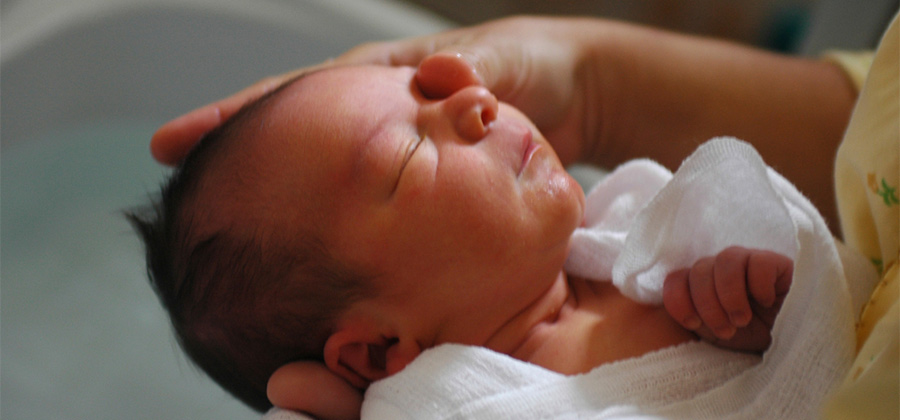New Baby Bathing and Hygiene 101

You'll never forget your baby's first bath. It's one of those special milestones that are a part of life. Plus, bathing and hygiene time are wonderful bonding moments for a baby with mom, dad, siblings and other caregivers. Here are basic tips on how to best handle bathing and hygiene with your newborn.
Bathing Frequency
Bathe baby about every three or four days. Their skin is sensitive and dry, especially during the first few weeks.
Because it was exposed to amniotic fluid in the womb, baby's first layer of skin sheds during the first two or three weeks.
When bathing, start with their face using a washcloth with water only, no soap.
Using a mild soap, wash their hair, and then start working your way down their body.
While you're still at the hospital post-delivery, ask if they can demonstrate a proper bath for you. Many hospitals do this as a matter of course.
Swaddle Bathing
This is the gentlest way to bathe a newborn since they don't get as cold.
Wrap them in a hoodie-type towel, pulling it down or away from their body when you want to wash and rinse a certain part, tucking them back in the swaddle to dry. It's cozier and warmer, especially in winter.
Bathwater temperature is something you'll want to be sure and monitor closely. The preferred temperature for baby's bath is about 100 degrees, similar to body temperature.
Use the back of your hand to measure temperature. Dip it into the bathwater. If it's comfortable, it will be comfortable for your baby.
Shampoo
Use unscented or minimal scent to reduce the risk of a reaction.
There's no one recommended shampoo, but Johnson & Johnson and Aveeno Baby products are popular and safe.
If your baby has sensitive skin, you can try Cetaphil or CeraVe. Be sure to consult your pediatrician if you have questions.
Nail trimming
Use a small emery board first to file your baby's nails. There's also a technique for gently tearing the nails; newborns' nails are almost paper-thin. Ask your pediatrician or nurse to demonstrate this before you leave the hospital.
A newborn's nails thicken after a few weeks to a month. At first, clipping should be a two-person job using an infant nail clipper. Look for one that has a magnifying glass to help you make sure you're clipping the nail.
If you accidentally clip baby's skin, don't let it shake you up. Just get a cold, wet paper towel and wrap it, using a little pressure. This will stop any bleeding. Use an over-the-counter antibiotic ointment on it as it heals.
Spending time with your newborn on these cleansing and hygiene rituals will help you bond with your baby and create special times you'll hold dear for years to come.
3-6 Months;Infant and Toddler Care;Newborn;Parenting;Skin Care
Pediatrics
